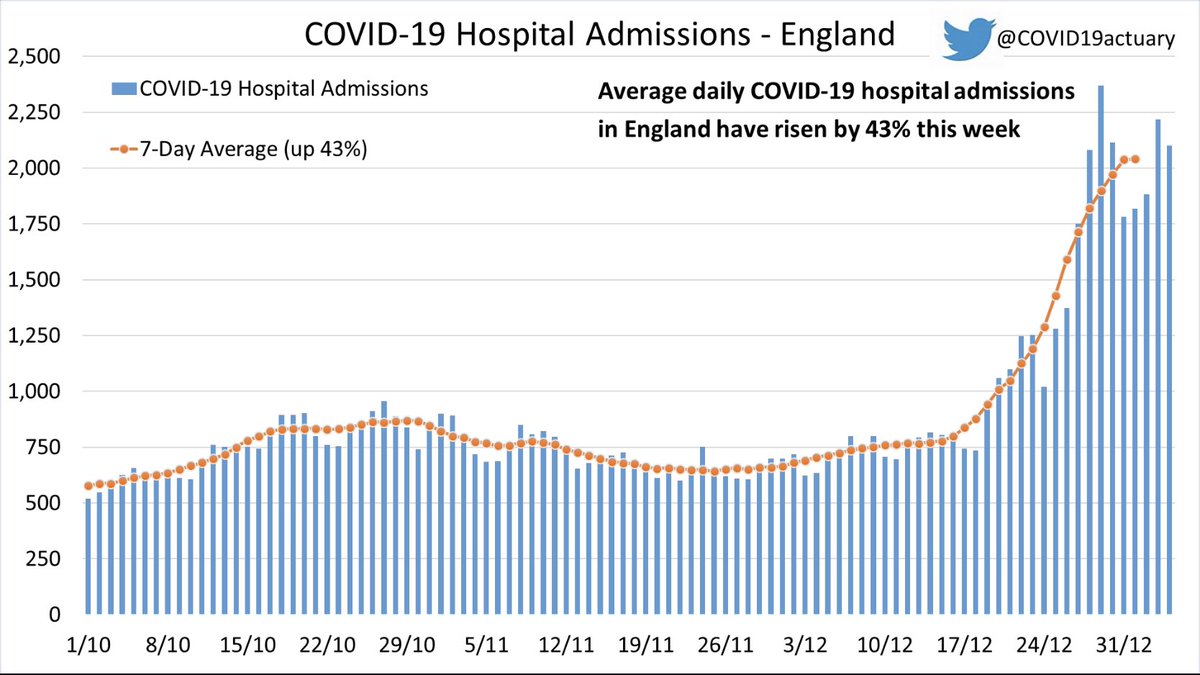
Tomorrow will see the publication of the first weekly death registrations update of 2022.
There is much interest in the extent to which Omicron is leading to excess deaths when compared to past winters. But how should the excess be calculated?
covidactuaries.org/2022/01/16/ass…
There is much interest in the extent to which Omicron is leading to excess deaths when compared to past winters. But how should the excess be calculated?
covidactuaries.org/2022/01/16/ass…
In a new blog @john_actuary looks at statements from @ONS and the CMI (part of @actuarynews) about the benchmark against which 2022 excess deaths will be calculated.
What sounds like a technical issue is highly significant. The ONS change will mean 11,000 fewer excess deaths.
What sounds like a technical issue is highly significant. The ONS change will mean 11,000 fewer excess deaths.
ONS will update their benchmark so that they are taking the average of deaths in 2016-19 and 2021. Previously they used 2015-19. The chart below shows significant differences in the number of deaths “expected” each week using different choices of benchmark. 

The main difference between CMI and ONS excess death calculations is that CMI use age-standardisation. This implicitly allows for extra deaths that occur each year because of the ageing population, even when death rates are unchanged. This meant a smaller excess in 2021. 

Throughput the pandemic CMI have calculated excess deaths relative to mortality rates in 2019, the most recent pre-pandemic year. Death rates in 2020 were very similar to those in 2019 until the pandemic struck. CMI will continue to use 2019 as their benchmark in 2022. 

No benchmark is perfect and different calculation methods can lead to different preferences. Let us hope that the excess in 2022 is sufficiently small that the calculation method is relegated to a niche debate between actuaries and demographers.
covidactuaries.org/2022/01/16/ass…
covidactuaries.org/2022/01/16/ass…
• • •
Missing some Tweet in this thread? You can try to
force a refresh


















